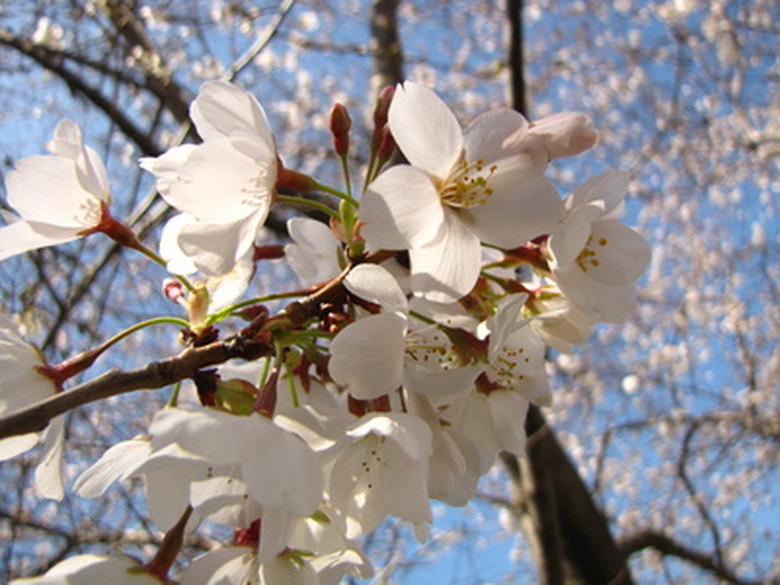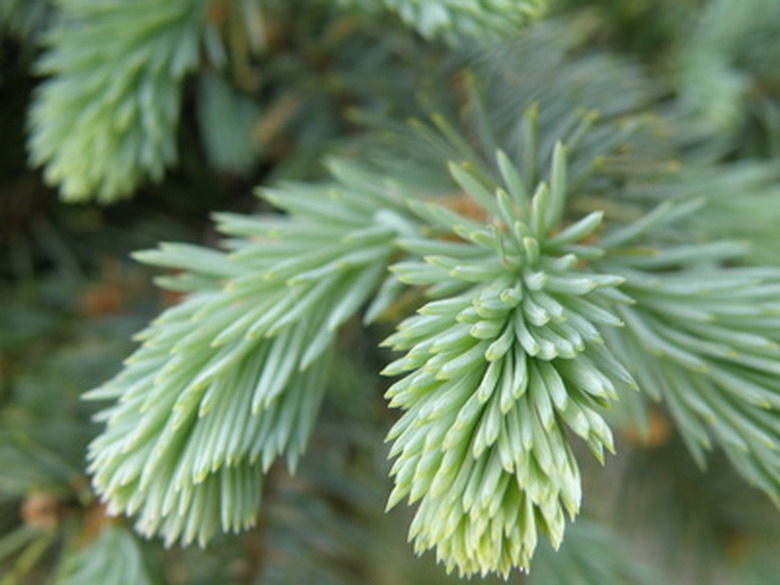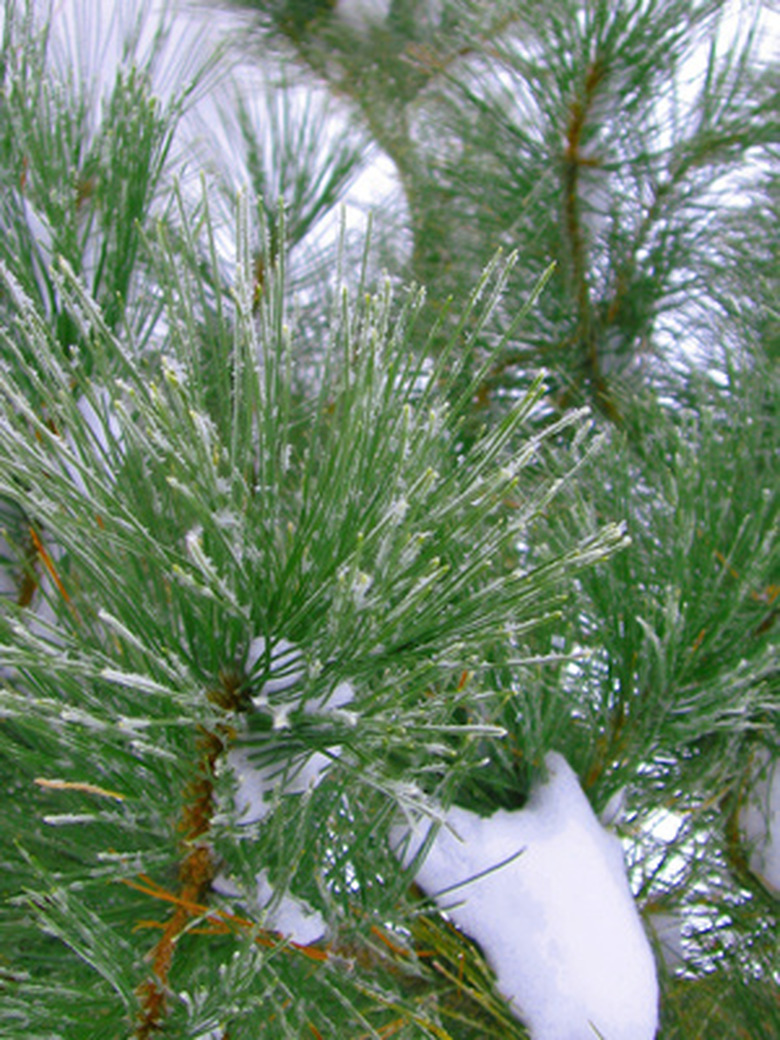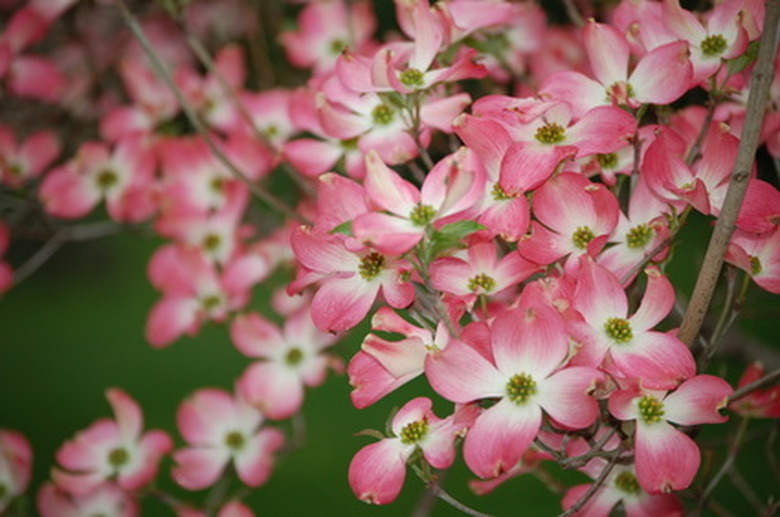Ornamental Trees In Pennsylvania
When choosing ornamental trees in Pennsylvania, pay attention to the unique environmental characteristics of your state; the majority of Pennsylvania falls within USDA hardiness zones 5 and 6 with smaller areas in zones 4 and 7. Identify ornamental trees that thrive in Pennsylvania's typically humid climate, warm summers, approximately 100 days of freezing winter temperatures and evenly distributed rainfall of 35 to 54 inches primarily during the spring and summer months.
Colorado Blue Spruce
Colorado blue spruce (Picea pungens Engelm.) is a widely planted, non-native evergreen ornamental tree in Pennsylvania, according to the Pennsylvania Department of Conservation and Natural Resources. This ornamental spruce tree displays blue-green and silver-green needles that measure approximately 3/4 inch to 1 inch in length as well as cones that measure 2 to 4 inches in length. With a slow to medium growth rate, the Colorado blue spruce thrives in full sunlight and moist, well-drained soil, and grows to a height of 30 to 90 feet with a width of 10 to 20 feet, according to the NC State University Cooperative Extension.
Eastern White Pine
Eastern white pines (Pinus strobus L.) are common, native ornamental trees in Pennsylvania, found in both moist and dry woodlands across the state, according to the Pennsylvania Department of Conservation and Natural Resources. Also, evergreen Eastern white pines display soft, blue-green needles that form groups of 5 as well as brown cones that grow to a length of 5 to 8 inches. With a rapid growth rate, Eastern white pine trees thrive in full sun to partial shade and prefer moist, well-drained soil. This ornamental tree grows to a height of 50 to 80 feet and a width of 20 to 40 feet, according to the NC State University Cooperative Extension.
- When choosing ornamental trees in Pennsylvania, pay attention to the unique environmental characteristics of your state; the majority of Pennsylvania falls within USDA hardiness zones 5 and 6 with smaller areas in zones 4 and 7.
- With a slow to medium growth rate, the Colorado blue spruce thrives in full sunlight and moist, well-drained soil, and grows to a height of 30 to 90 feet with a width of 10 to 20 feet, according to the NC State University Cooperative Extension.
Flowering Dogwood
Flowering dogwoods (Cornus florida L.) are commonly planted, native ornamental trees in Pennsylvania, according to the Pennsylvania Department of Conservation and Natural Resources. Deciduous flowering dogwoods display small green-white or yellow flowers backed by white, pink, or red bracts (leaf-like structure that appear to be flower petals) with green foliage; flowering dogwoods yield glossy red berries during the fall season. With a slow to moderate growth rate, these ornamental trees in Pennsylvania thrive in partial shade, prefer moist, well-drained soil, and reach a height of 15 to 30 feet with a width of 15 to 20 feet, according to the NC State University Cooperative Extension.
Common Honeylocust
Common honeylocusts (Gleditsia triacanthos L.) are ornamental trees in Pennsylvania that grow naturally on wet sites in the southwestern region of Pennsylvania, according to the Pennsylvania Department of Conservation and Natural Resources; common honeylocusts are planted across the entire state. Common honeylocusts display yellow-green flowers, brown seed pods, and green foliage. This deciduous ornamental tree has a rapid growth rate, thrives in full sun, is adaptable to a wide range of soil types, and reaches a height of 50 to 75 feet with a width of 25 to 40 feet, according to the NC State University Cooperative Extension.
References
- Pennsylvania Department of Conservation and Natural Resources: Common Trees of Pennsylvania
- NC State University Cooperative Extension: Tree Index, Colorado Blue Spruce
- NC State University Cooperative Extension: Tree Index, Eastern White Pine
- NC State University Cooperative Extension: Tree Index, Flowering Dogwood
- NC State University Cooperative Extension: Tree Index, Common Honeylocust



